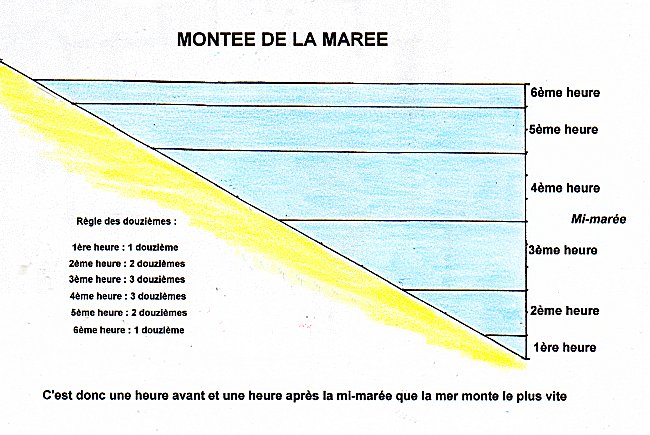Below the mid-tide level, some species can tolerate low daily exposure out of the water.
First of all, it is the domain of the toothed kelp ( fucus serratus), a dense, very abundant seaweed, whose sawtooth edges are immediately noticeable in its strips. He never wears vesicles.

When it is in a quiet and sheltered area, it can reach a length of one metre. It is sought for the production of alginates and also for the manufacture of anticoagulants.
In the same area, there are three very characteristic red seaweeds.
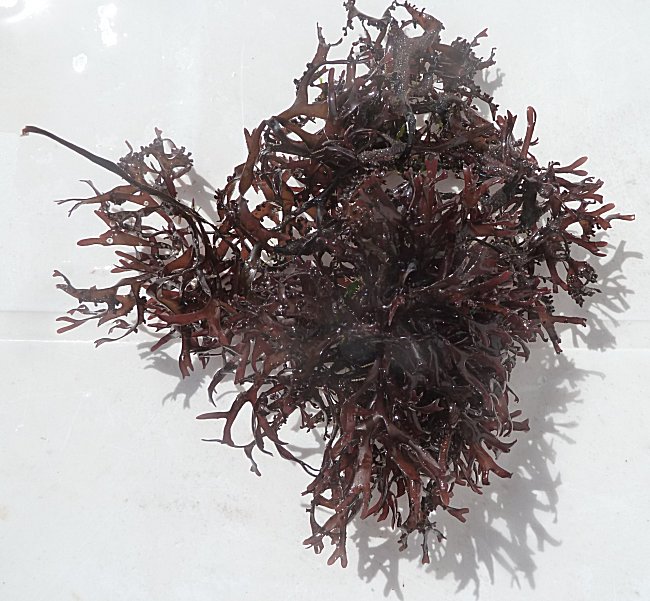
The pioka ( chondrus crispus), or small kelp, is dark red. It occurs in very dense tufts about 10 to 20 cm thick and spreads to the bottom of the foreshore. Carrageenans used in the food industry as thickeners are extracted from it to make desserts, for example. It is called E407 on packagings.
Now here is another red seaweed :
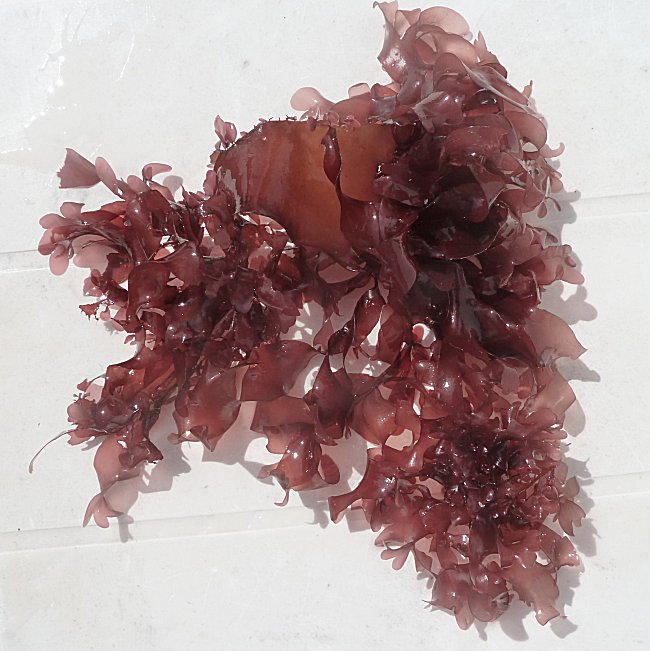
It is the dulse ( palmaria palmata), lighter in colour between purple and pink, which also colonizes these rocks. Its tufts have slats with indented ends. Highly sought-after for its high potassium and protein content, it is used in the food industry and in abalone farming. In cooking, it enhances mayonnaise, quiches and raw vegetable salads.
Another seaweed is found in this area. The nori ( porphyra) is reddish-brown in colour as seen in the photo below where it neighbors with an ulve.
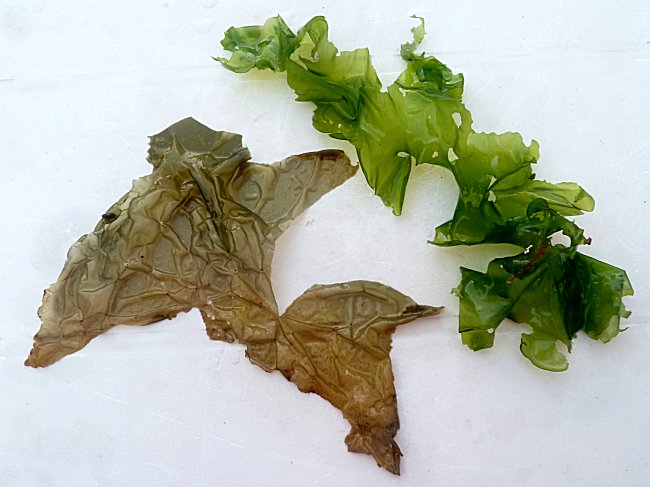
This seaweed, very rich in vitamins and omega-3s, also contains an anti-cholesterol and is discreetly scented. It is grown in Japan, where more than one million tonnes are produced each year. Marketed in Brittany, it is mainly used to wrap sushi and maki, and delicately accompanies eggs, sauces and even the most delicate dishes.
Characteristic of the lower limit of the foreshore, the haricot de mer or himanthale allongée ( Himanthalia elongata ) or linoch in Breton, has long, flattened, dichotomous strips that can grow up to three meters long.
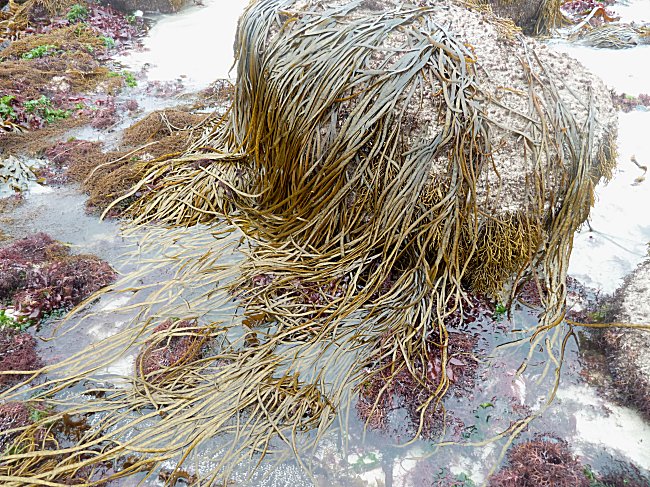
All these straps start from a spike topped with a small cup that only remains when the young shoots are cut in spring. This abundant seaweed, five times richer in vitamin C than kiwifruit, can be used in cooking like green beans to accompany meat or fish, to which it lends its light, nutty flavor.






